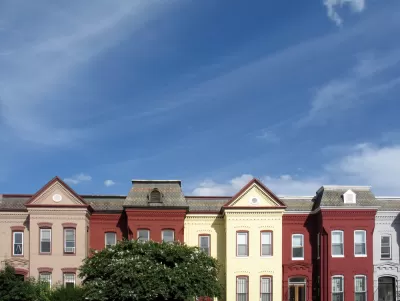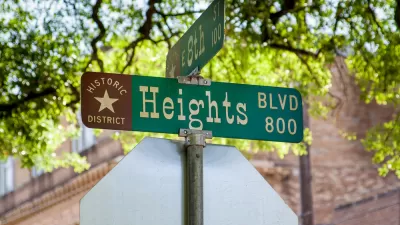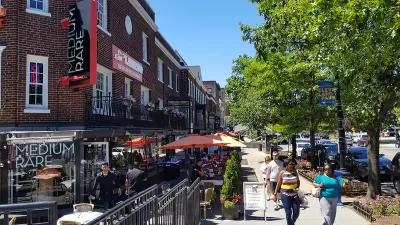A piecemeal, reactive approach to historic preservation in the capital may burden the future with too many buildings of "middling merit."

Noting that the city "has many more historically protected buildings than cities several times our size," Payton Chung argues that a vague set of criteria and the lack of a more centralized approach are hampering the effectiveness of historic preservation in Washington D.C.
Preservation may often act as a second option for residents opposed to changes the zoning code cannot prohibit. "Once it's in force, preservation concerns get the final say over just about everything else that might be on a community's wish list, whether it's sustainability, affordability, or occupant comfort."
A preservation glut, in addition to blocking new construction, "does an injustice to legitimately interesting buildings whose histories have yet to be uncovered, while also bloating the historic inventory with many other buildings of middling merit."
Chung makes a comparison to hoarding, whereas true collectors pick and choose. For D.C., picking and choosing might involve a comprehensive citywide survey of historic structures. "In these surveys, planners go out into the field to visit and inventory every single building, and evaluate whether it could potentially meet the predetermined criteria for historic designation because of its age, architectural merit, or context."
Basing historic designation on such a survey, Chung says, "would guarantee that the stories that those [building] types tell are being preserved, rather than rescuing everything for all time."
FULL STORY: Historic preservation in DC prioritizes the loudest neighbors, not the finest buildings

Maui's Vacation Rental Debate Turns Ugly
Verbal attacks, misinformation campaigns and fistfights plague a high-stakes debate to convert thousands of vacation rentals into long-term housing.

Planetizen Federal Action Tracker
A weekly monitor of how Trump’s orders and actions are impacting planners and planning in America.

In Urban Planning, AI Prompting Could be the New Design Thinking
Creativity has long been key to great urban design. What if we see AI as our new creative partner?

Cal Fire Chatbot Fails to Answer Basic Questions
An AI chatbot designed to provide information about wildfires can’t answer questions about evacuation orders, among other problems.

What Happens if Trump Kills Section 8?
The Trump admin aims to slash federal rental aid by nearly half and shift distribution to states. Experts warn this could spike homelessness and destabilize communities nationwide.

Sean Duffy Targets Rainbow Crosswalks in Road Safety Efforts
Despite evidence that colorful crosswalks actually improve intersection safety — and the lack of almost any crosswalks at all on the nation’s most dangerous arterial roads — U.S. Transportation Secretary Duffy is calling on states to remove them.
Urban Design for Planners 1: Software Tools
This six-course series explores essential urban design concepts using open source software and equips planners with the tools they need to participate fully in the urban design process.
Planning for Universal Design
Learn the tools for implementing Universal Design in planning regulations.
Appalachian Highlands Housing Partners
Gallatin County Department of Planning & Community Development
Heyer Gruel & Associates PA
Mpact (founded as Rail~Volution)
City of Camden Redevelopment Agency
City of Astoria
City of Portland
City of Laramie





























